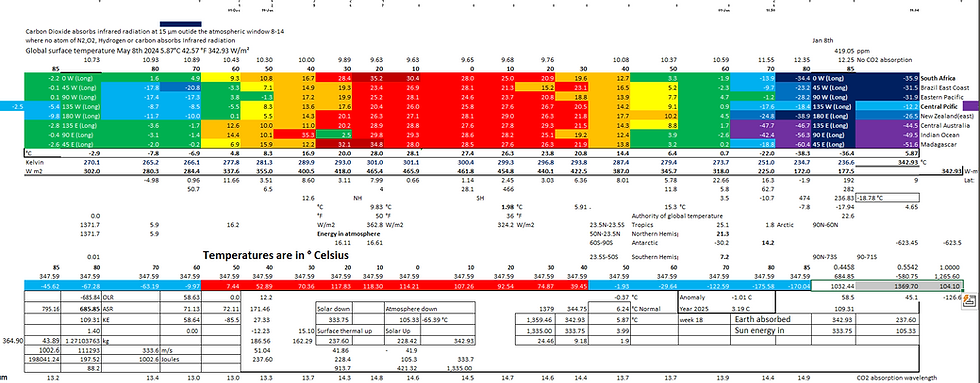Global Temperature July Report
- Stephen Lindsay-Yule
- Aug 9
- 2 min read
Updated: Aug 10
Global Temperature for July was normal for 2025.
In July the earth should be 4.6°C above the heat temperature the sun provides to the earth.
A temperature of 3°C (276K 329.25 watts or 1317 total solar irradiance).
The incoming solar irradiance (the sun is 152 million km away) is at its least solar heat the earth gets at this time of the year.
As land dominates the northern hemisphere, the earth's tilt is at 23°N(decreasing during July), allowing more sunlight to heat northern hemisphere.
So this means the polar region heats some 30°C (above when there was no sunlight for 6 months), nearly all of the snow melts across the northern hemisphere land. Except close to the Greenland ice sheet(which doesn't melt away).
During July 70% of the arctic ocean has remaining sea ice (as ice requires lots of heat to melt).
The high latitude land masses (away from Greenland) heats to arid dry hot conditions (above 20°C) in July, when winds come from the south.
A temperature swing of some 60-70°C (winter to summer comparison) happens in Siberia.
In July 2025 the average global mean temperature was 7.54°C (45.6°F) 280.74K 352.21w-m2 (1408.8w-m2).
This is 92 watts above solar input (1317w-m2).
Half of the total(1408.8w-m2, 704.4w-m2) heats 75% of the earth (88°N to 47°S).
Heat loss of 612.6 watts includes 506.2 watts going out to space and 106.4 watts of heat in the stratosphere / top of the troposphere.
NH land snow extent melt for July was 1 million km2.
Northern hemisphere sea ice extent melt for July was 2.4 million km2.
Southern hemisphere sea ice extent growth for July was 2 million km2.
Temperature of the oceans warmed up from June to July by 0.81°C (14.65°C to 15.46°C) 80°N to 70°S.
Below is the data.












Comments